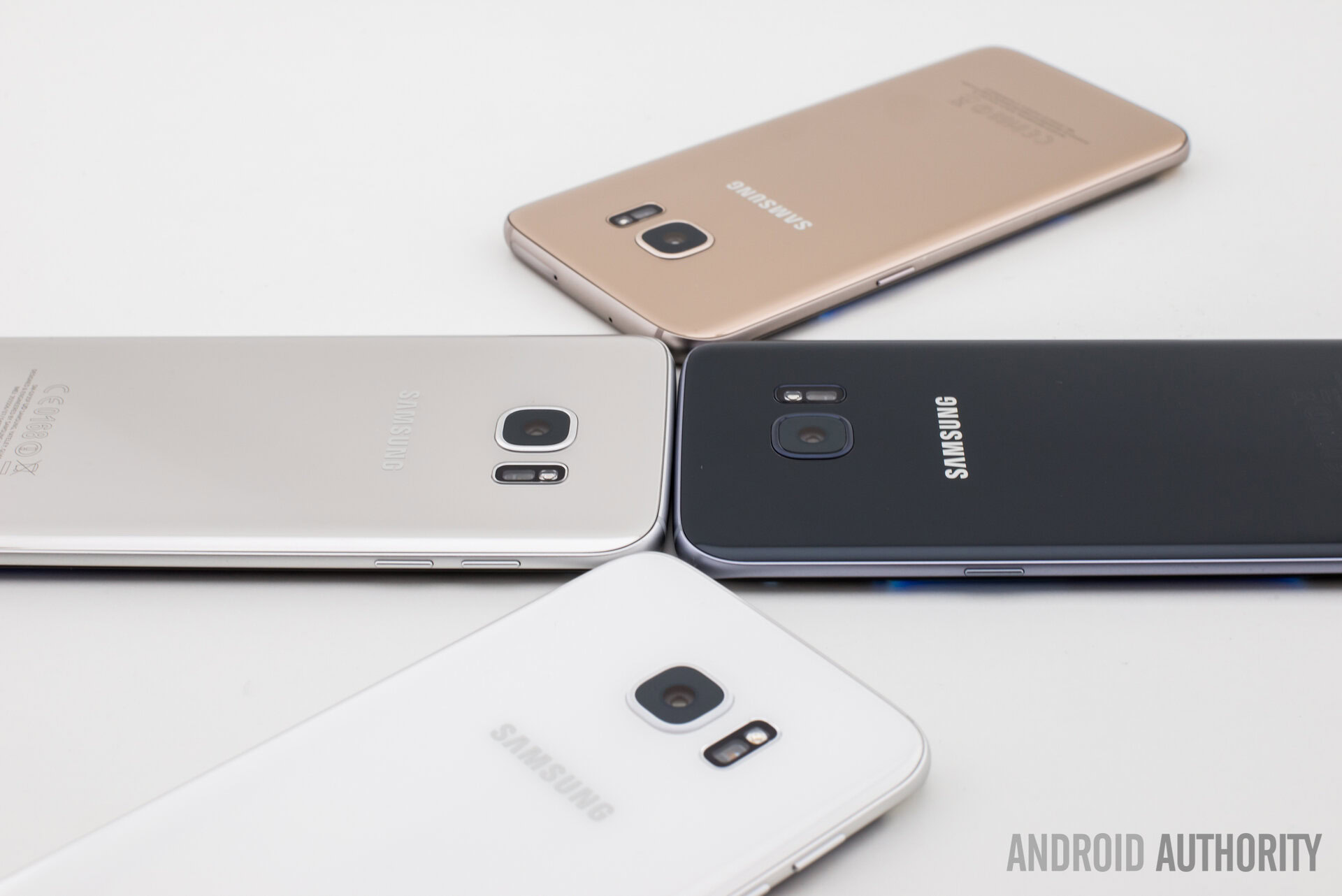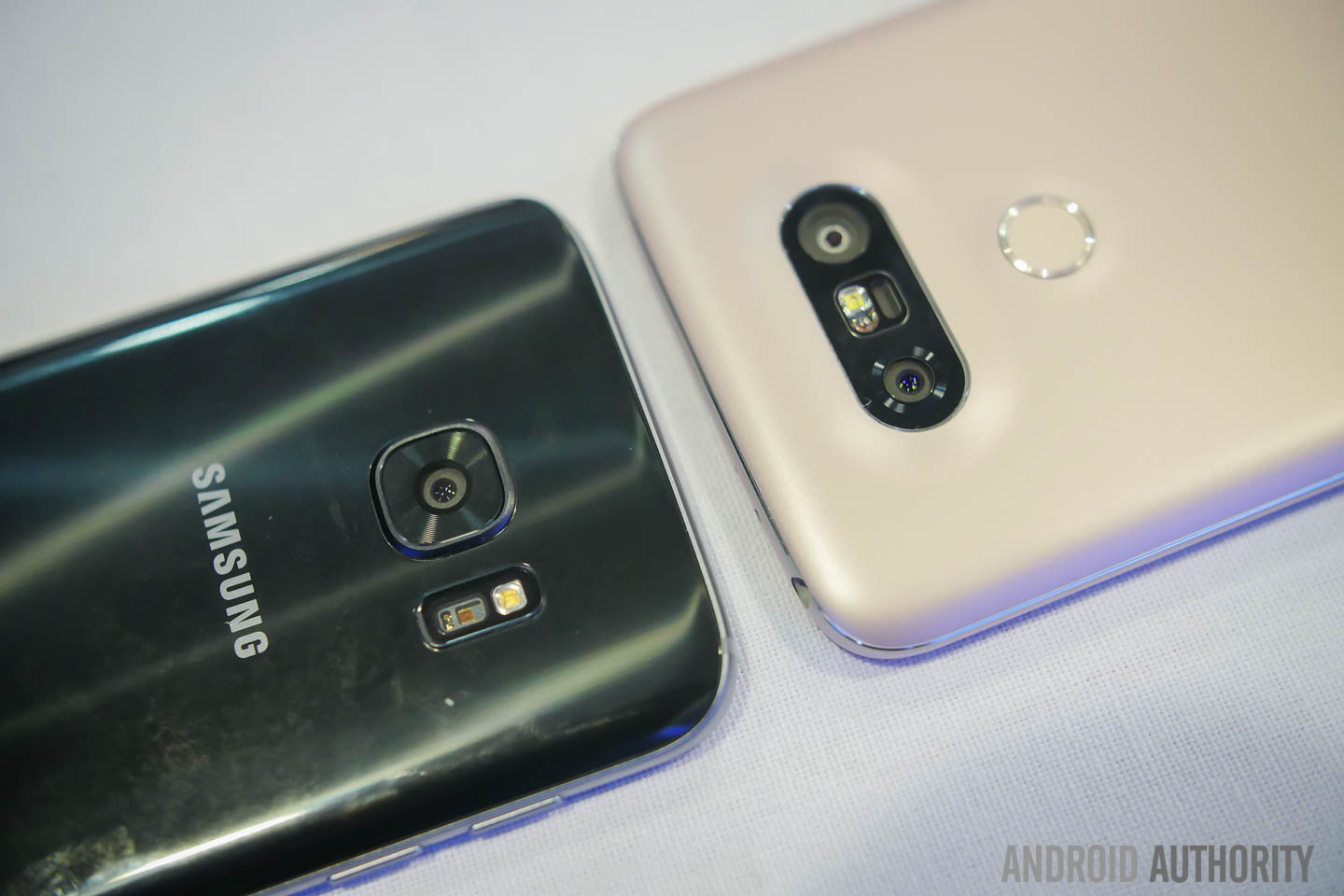Affiliate links on Android Authority may earn us a commission. Learn more.
Does the Galaxy S7 overheat?

Last year, Samsung switched from powering some of its flagship Galaxy S6 range with a Qualcomm processor, to offering all the models powered by its own Exynos 7420 SoC instead. No doubt, one of potential reasons behind this was the reports of early versions of Qualcomm’s Snapdragon 810 SoC overheating in day to day usage, but with the Galaxy S7 family, the Korean OEM has reverted to partnering with Qualcomm on some of the models.

The question many people ask however, is whether the Galaxy S7 line-up suffers from the same minor issues that plagued its predecessors, mainly that they ran hot thanks to the metal and glass frame. One of the smaller announcements around the Galaxy S7 was that Samsung has included a liquid cooling solution, which was designed to cool down internal components when they began to overheat.
Does it work though? Without tearing the Galaxy S7 apart, it’s only possible to approximate this. Taking the data that we compiled in last year’s Best of Android comparison and running the same tests on the Exynos-powered Galaxy S7 and Galaxy S7 Edge, we can tell whether the current smartphones operate cooler than their predecessors.
Let the testing begin
Before we get into other factors that can help keep a smartphone cool, let’s first consider the results.
Below we’ve tested the Exynos powered Galaxy S7 and Galaxy S7 Edge with the same tests to distinguish if one of the two handsets overheats more than the other. We’ve also combined the data compiled in our testing a few months ago to give you a comparison against other devices.
4K recording test
4K video recording may be a feature present on most mid-range and premium smartphones, but it is also a sure-fire way to put your smartphone’s internals under enough pressure to heat up to (sometimes critical) temperatures. With a 4K recording limit of 10 minutes, does the Galaxy S7 heat up noticeably or does liquid cooling and power efficiencies prevent it from doing so?
| Phone | Temperature 1/3 | Temperature 2/3 | Temperature 3/3 | Average |
|---|---|---|---|---|
| PhoneTemperature 1/3Temperature 2/3Temperature 3/3Average | ||||
| Phone Google Nexus 6P | Temperature 1/3 + 1.4 | Temperature 2/3 + 2.2 | Temperature 3/3 + 1.6 | Average + 1.73 |
| Phone Xperia Z5 Premium | Temperature 1/3 + 4.2 | Temperature 2/3 + 4.5 | Temperature 3/3 + 3.6 | Average + 4.10 |
| Phone Galaxy Note 5 | Temperature 1/3 + 2.1 | Temperature 2/3 + 4.2 | Temperature 3/3 + 7.1 | Average + 4.47 |
| Phone Galaxy S7 Edge | Temperature 1/3 + 2.3 | Temperature 2/3 + 4.9 | Temperature 3/3 + 6.3 | Average + 4.50 |
| Phone Galaxy S7 | Temperature 1/3 + 2.5 | Temperature 2/3 + 5.3 | Temperature 3/3 + 6.9 | Average + 4.90 |
| Phone LG V10 | Temperature 1/3 - 0.1 | Temperature 2/3 + 4.4 | Temperature 3/3 + 11 | Average + 5.10 |
| Phone BlackBerry Priv | Temperature 1/3 + 3.4 | Temperature 2/3 + 5.8 | Temperature 3/3 + 6.5 | Average + 5.23 |
| PhoneTemperature 1/3Temperature 2/3Temperature 3/3Average | ||||
Taking the average of the three temperatures recorded, the Galaxy S7 Edge heats up less than the Galaxy S7 does, with a temperature increase of +4.50° and +4.90° respectively. Despite this however, both rise in temperature slightly more than the Samsung Galaxy Note 5 and pale in comparison to the Google Nexus 6P, which scores a +1.73° rise.
1080p recording test
That’s 4K recording but what about Full HD video? Less taxing on internals, Full HD recording has a much longer cap so we ran the test for 30 minutes before measuring the temperature of each handset. The Galaxy Note 5 proved to be a chilled affair but do the Galaxy S7 and Galaxy S7 Edge stack up to last year’s phablet king?
| Phone | Temperature 1/3 | Temperature 2/3 | Temperature 3/3 | Average |
|---|---|---|---|---|
| PhoneTemperature 1/3Temperature 2/3Temperature 3/3Average | ||||
| Phone Galaxy Note 5 | Temperature 1/3 + 1.5 | Temperature 2/3 + 1.7 | Temperature 3/3 + 1.0 | Average + 1.40 |
| Phone Xperia Z5 Premium | Temperature 1/3 + 1.7 | Temperature 2/3 + 2.0 | Temperature 3/3 + 0.7 | Average + 1.47 |
| Phone LG V10 | Temperature 1/3 + 0.7 | Temperature 2/3 + 1.9 | Temperature 3/3 + 4 | Average + 2.20 |
| Phone Galaxy S7 Edge | Temperature 1/3 + 0.7 | Temperature 2/3 + 3.5 | Temperature 3/3 + 5.6 | Average + 3.27 |
| Phone Google Nexus 6P | Temperature 1/3 + 3.0 | Temperature 2/3 + 3.3 | Temperature 3/3 + 3.9 | Average + 3.40 |
| Phone Galaxy S7 | Temperature 1/3 + 2.2 | Temperature 2/3 + 5.7 | Temperature 3/3 + 7.3 | Average + 5.07 |
| Phone BlackBerry Priv | Temperature 1/3 + 4.1 | Temperature 2/3 + 5.1 | Temperature 3/3 + 8.1 | Average + 5.77 |
| PhoneTemperature 1/3Temperature 2/3Temperature 3/3Average | ||||
This is where the Galaxy S7 proves to be a disappointment, running quite hot after its stint as a cameraman. With an average temperature rise of 5.07°, the smartphone falls behind the Nexus 6P, LG V10 and the Xperia Z5 Premium. The Galaxy S7 Edge fares considerably better but with a temperature rise of +3.27°, it still only ranks one place higher.
Gaming test
The last test is one that’s also guaranteed to put the internals under considerable pressure: mobile gaming. Specifically, a 30 minute session of Defense Zone 2 HD, which is fairly resource intensive. How does each smartphone fare? (Note that we haven’t run this test previously so the results for the Nexus 6P, Galaxy Note 5 and BlackBerry Priv were all captured as part of our testing).
| Phone | Temperature 1/3 | Temperature 2/3 | Temperature 3/3 | Average |
|---|---|---|---|---|
| PhoneTemperature 1/3Temperature 2/3Temperature 3/3Average | ||||
| Phone Google Nexus 6P | Temperature 1/3 + 0.8 | Temperature 2/3 + 2.1 | Temperature 3/3 + 1.6 | Average + 1.50 |
| Phone Galaxy Note 5 | Temperature 1/3 + 1.2 | Temperature 2/3 + 2.2 | Temperature 3/3 + 1.5 | Average + 1.63 |
| Phone BlackBerry Priv | Temperature 1/3 + 3.2 | Temperature 2/3 + 2.1 | Temperature 3/3 + 2.5 | Average + 2.60 |
| Phone Galaxy S7 | Temperature 1/3 + 1.3 | Temperature 2/3 + 1.1 | Temperature 3/3 + 1.2 | Average + 1.20 |
| Phone Galaxy S7 Edge | Temperature 1/3 + 1.4 | Temperature 2/3 + 0.9 | Temperature 3/3 + 1.5 | Average + 1.27 |
| PhoneTemperature 1/3Temperature 2/3Temperature 3/3Average | ||||
As you can see, the Galaxy S7 and Galaxy S7 Edge both outperform the Nexus 6P, Galaxy Note 5 and BlackBerry Priv, as the efficiency gains provided by new architecture come into effect. This could also be potentially due to Samsung’s liquid cooling feature, and with a percentage gain of approximately 28% and 22% respectively over the Galaxy Note 5, it’s likely to be a combination of both factors.
Do the Galaxy S7 and S7 Edge overheat?
From the data to our initial question – do the Galaxy S7 and Galaxy S7 Edge overheat? The data clearly shows that both smartphones do indeed run hot during camera-based tasks – with the area containing the camera proving to be the hottest part of each smartphone – but during performance intensive tasks, Samsung’s newest flagships remain mostly cool.
| Phone | 4K video | 1080p video | Post Gaming | Averages |
|---|---|---|---|---|
| Phone4K video1080p videoPost GamingAverages | ||||
| Phone Google Nexus 6P | 4K video + 1.73 | 1080p video + 3.40 | Post Gaming + 1.50 | Averages + 2.21 |
| Phone Galaxy Note 5 | 4K video + 4.47 | 1080p video + 1.40 | Post Gaming + 1.63 | Averages + 2.50 |
| Phone Xperia Z5 Premium | 4K video + 4.10 | 1080p video + 1.47 | Post Gaming N/A | Averages + 2.78 |
| Phone Galaxy S7 Edge | 4K video + 4.50 | 1080p video + 3.27 | Post Gaming + 1.27 | Averages + 3.01 |
| Phone LG V10 | 4K video + 5.10 | 1080p video + 2.20 | Post Gaming N/A | Averages + 3.65 |
| Phone Galaxy S7 | 4K video + 4.90 | 1080p video + 5.07 | Post Gaming + 1.20 | Averages + 3.72 |
| Phone BlackBerry Priv | 4K video + 5.23 | 1080p video + 5.77 | Post Gaming + 2.60 | Averages + 4.53 |
| Phone4K video1080p videoPost GamingAverages | ||||
Taking averages of each smartphone across the various tests, we can see that the Galaxy S7 and S7 Edge rank lower than you might have expected, with the Nexus 6P, LG V10 and Galaxy Note 5 proving to be cooler on average.
[related_videos title=”These phones in video:” align=”left” type=”custom” videos=”682146,676155,682253,680806,679646,679576″]What is particularly interesting however, is that the Galaxy S7 Edge is consistently cooler than the regular variant; the extra size of Samsung’s larger flagships offers heat a wide area from which to dissipate and as such, the smartphone does run noticeably cooler.
Does liquid cooling work on the Galaxy S7 and Galaxy S7 Edge? This is much harder to say. As a feature designed to keep cool internal components – such as the motherboard, RAM, CPU and GPU – it seems to work during particularly resource intensive tasks such as performance tests, but not so much during camera-based testing.
It is entirely likely that liquid cooling does help keep these internal components cooler during all testing, but the redesigned camera module overheats more than on previous devices, resulting in a false negative result.
Either way, the Galaxy S7 and S7 Edge may noticeably heat, but only marginally. There’s very little to actually worry about and it doesn’t seem to affect performance in anyway.
Let us know what you think in the comments below!